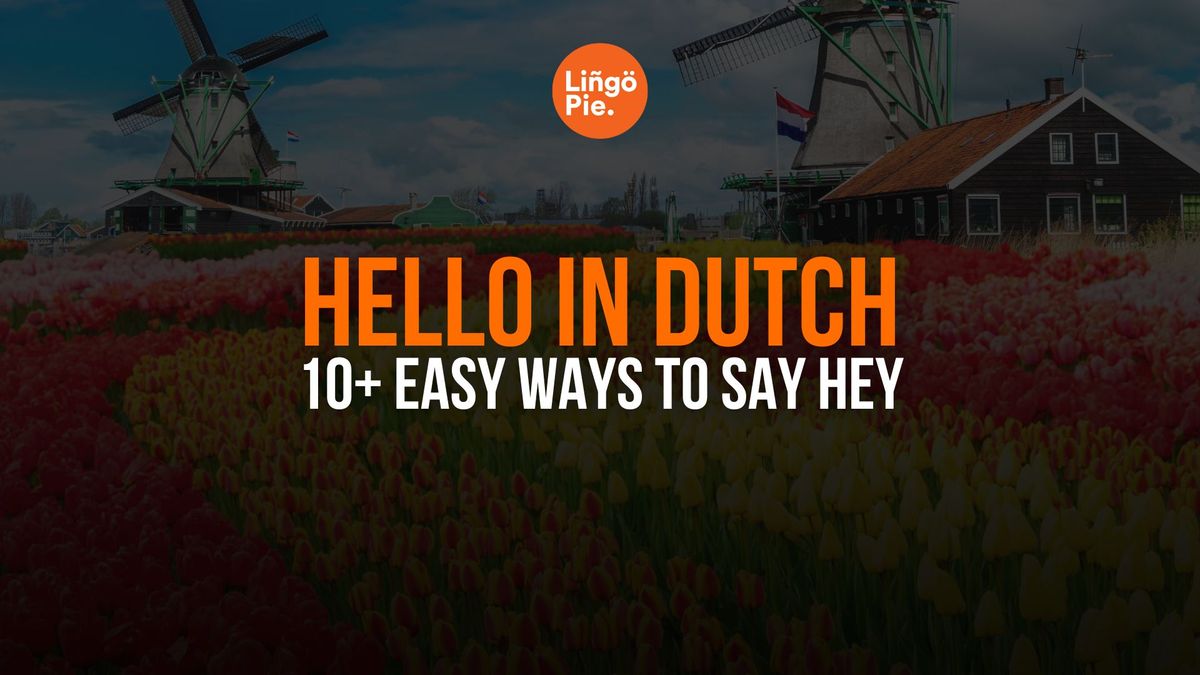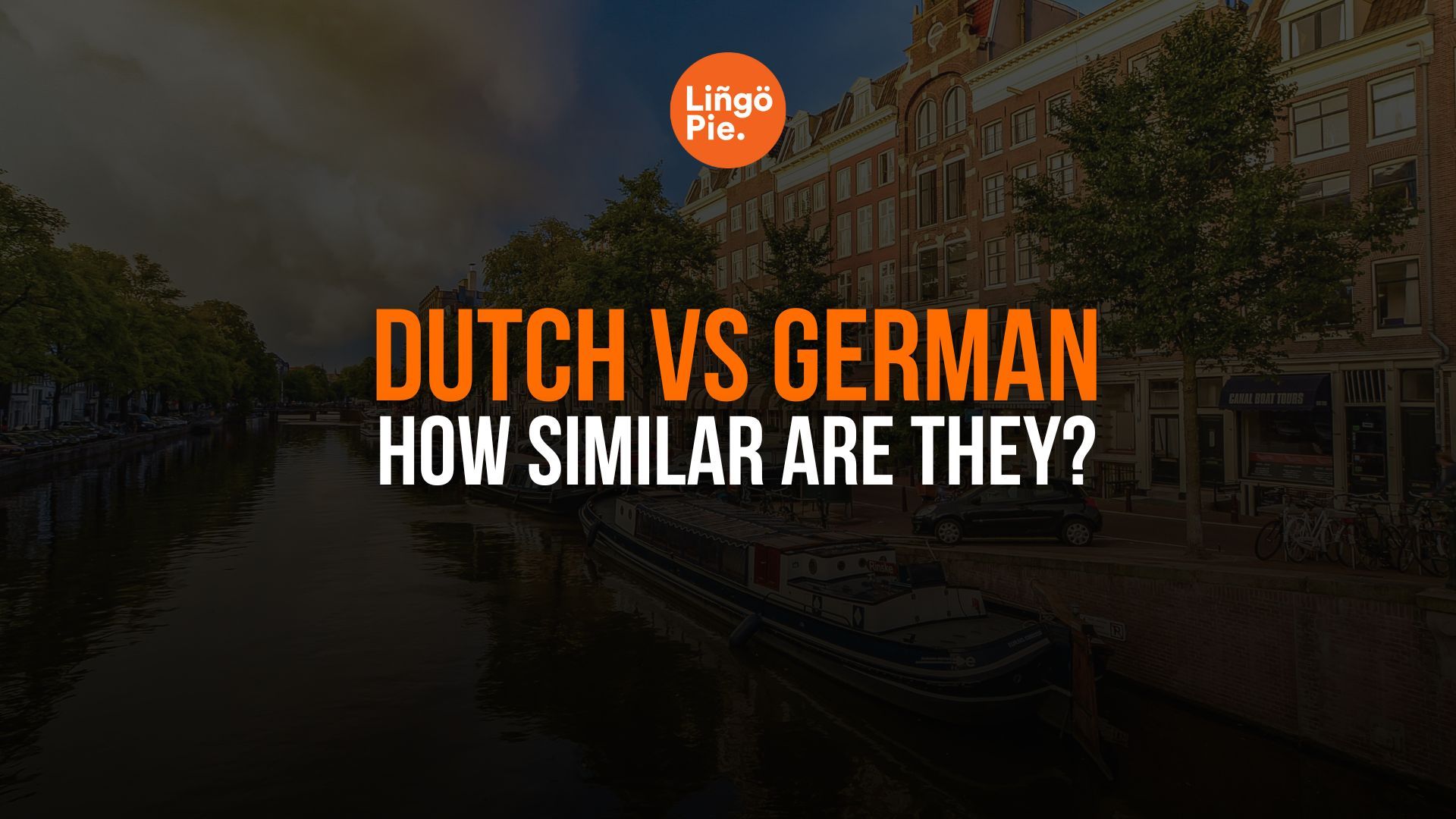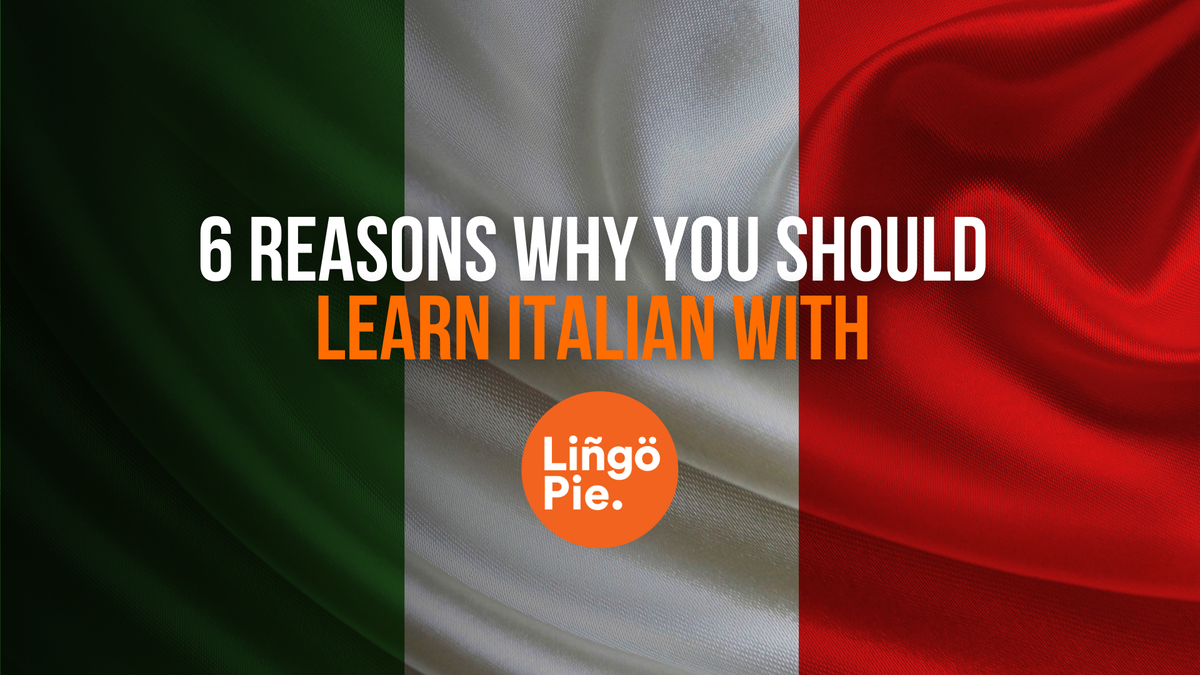Whether you're planning a trip to Amsterdam, connecting with Dutch friends online, or just expanding your language skills, knowing how to greet someone properly in Dutch can open up wonderful conversations. The most common way to say "hello" in Dutch is "Hallo" - see how familiar that looks?
But hang on, because there's more to Dutch greetings than meets the eye, and I'm excited to walk you through all the ways you can say hi like a true Dutchie. In this post, I'll share with you all the unique ways to say hello in Dutch and the common conversation starters to follow up after that.
- How To Say Hello In Russian: 7 Common Phrases
- 6 Best Ways To Say Hello In Tagalog [A Traveler's Guide]
- 56+ Easy Portuguese Greetings For Total Beginners

What Is Hello In Dutch?
"Hallo" is the standard Dutch word for "hello" - simple and effective for most situations. While it's the most common greeting, Dutch actually offers a variety of ways to say hello that can make your interactions more authentic and context-appropriate.
I'll walk you through three main categories of Dutch greetings that'll help you navigate any social situation with confidence. First, we'll look at casual greetings perfect for friends and everyday encounters. Then, we'll explore formal ways to say hello that'll serve you well in professional settings or when meeting older folks. I'll also share some cool Dutch slang greetings that'll help you fit right in with younger crowds.
Casual Ways To Say Hello In Dutch
The Dutch are known for their straightforward, friendly nature, and their casual greetings reflect this perfectly. These everyday greetings are what you'll hear most often on the streets, in cafes, or when meeting up with friends. They're relaxed, warm, and show you're comfortable with the person you're talking to.
- "Hoi" - The Dutch equivalent of "hi" and probably the most common casual greeting you'll hear
- "Hey" - Yes, it's exactly like English! Very popular among younger Dutch speakers
- "Goedemorgen" - Means "good morning" and is used until noon
- "Goedemiddag" - Means "good afternoon" and is used from noon until around 6 PM
- "Goedeavond" - Means "good evening" and is used after 6 PM
- "Dag" - A friendly way to say both "hello" and "goodbye", literally means "day"
- "Doei" - While technically a goodbye, many Dutch people use it as a casual hello too
These casual greetings work best when you're chatting with friends, meeting people your age, shopping at local stores, or just going about your daily activities in the Netherlands. Just remember that Dutch people appreciate directness, so there's no need to overthink it - pick the greeting that matches the time of day or go with a simple "hoi" or "hey", and you'll fit right in.

Formal Ways To Say Hello In Dutch
While the Dutch generally prefer casual interactions, there are situations where a more formal greeting shows proper respect. Business meetings, formal events, or speaking with elderly people are times when you'll want to elevate your greeting game.
- "Goedendag" - The most common formal way to say hello, literally meaning "good day"
- "Goedemorgen" - Formal "good morning" (when used with proper pronunciation)
- "Goedemiddag" - Formal "good afternoon"
- "Goedeavond" - Formal "good evening"
- "Hallo" - Yes, our familiar friend "hallo" can be formal too when paired with the right tone and "meneer" (sir) or "mevrouw" (madam)
In formal situations, Dutch speakers often combine these greetings with a title - like "Goedemorgen, meneer" or "Goedendag, mevrouw." The key difference isn't always the word itself, but how formally you pronounce it and your overall demeanor.
Slang Ways To Say Hello In Dutch
Young Dutch people, especially in bigger cities like Amsterdam and Rotterdam, have put their own spin on greetings. These casual, cooler ways of saying hello reflect the evolving Dutch language and its multicultural influences - particularly from Moroccan, Turkish, and Surinamese communities.
- "Yo" - Borrowed from English street culture, super common among Dutch youth
- "Hé" - Quick, casual "hey" with a Dutch twist in pronunciation
- "Hoi hoi" - A bouncy, energetic version of "hoi" that's extra friendly
- "Hallo hallo" - Similar to "hoi hoi", but with more playful energy
- "Hoiii" - The stretched-out version of "hoi" often used in texting and casual chats
These slang greetings belong in casual situations with friends, at festivals, in bars, or when messaging Dutch people your age. Be careful though - using these greetings with older Dutch people or in formal situations might raise some eyebrows! If you're hanging out with Dutch friends under 30, these are your go-to greetings. They're especially common in WhatsApp chats and social media, where you might see them written with extra letters or emojis for emphasis.

Conversation Starters In Dutch
After saying hello in Dutch, keeping the conversation going naturally is your next challenge. Dutch people value direct communication, and they often follow their greetings with straightforward questions about your well-being or what's new in your life. Let's look at the most common follow-ups that Dutch speakers use after their initial greeting.
Asking How Someone Is
These are the everyday phrases Dutch people use to check in on someone's well-being. They're similar to the English "How are you?" but remember - in Dutch culture, people often expect a more genuine answer rather than just a quick "fine."
| Dutch Phrase | Pronunciation | English Meaning |
|---|---|---|
| Hoe gaat het? | Hoo gaht het | How are you? |
| Alles goed? | Ah-les ghoed | Everything good? |
| Hoe is het leven? | Hoo is het lay-ven | How's life? |
| Hoe gaat het ermee? | Hoo gaht het er-may | How's it going? |
Asking About Someone's Day
Dutch people often ask specific questions about your day or recent activities. These questions show genuine interest and can help start a more detailed conversation.
| Dutch Phrase | Pronunciation | English Meaning |
|---|---|---|
| Hoe was je dag? | Hoo vas ye dagh | How was your day? |
| Wat heb je gedaan vandaag? | Vat heb ye ge-dahn van-dagh | What have you done today? |
| Drukke dag gehad? | Druk-ke dagh ge-had | Had a busy day? |
Casual Small Talk
These are relaxed, informal ways to start a conversation, often used among friends or in casual settings. They're perfect for breaking the ice without being too formal.
| Dutch Phrase | Pronunciation | English Meaning |
|---|---|---|
| Wat is er nieuw? | Vat is er nyoo | What's new? |
| Leuk je te zien! | Luk ye te zeen | Nice to see you! |
| Hoe is het weekend? | Hoo is het week-end | How's the weekend? |
- How To Say I Love You In Dutch: 10+ Ways To Express Love
- 18 Surprising Dutch Slang Words And Phrases
- 18+ Crazy Dutch Swear Words And Insults
What's Next?
Ready to improve your Dutch beyond "Hallo"? Lingopie is bringing Dutch language learning straight to your TV! You'll hear these greetings—and much more—in action through authentic Dutch shows and movies. Give it a try now!
Frequently Asked Questions About Dutch Greetings
Is Dutch hello similar to German hello?
While Dutch "Hallo" and German "Hallo" sound similar, they have slightly different pronunciations. The Dutch version has a softer 'a' sound, while the German one is more pronounced. Both languages share this greeting due to their Germanic roots, but Dutch pronunciation tends to be lighter and more clipped.
What time should I stop saying goedemorgen in Dutch?
Stop saying "goedemorgen" (good morning) at noon, or around 12:00. After that, switch to "goedemiddag" (good afternoon) until about 6:00 PM, when you should start using "goedeavond" (good evening).
How do you greet someone formally in Dutch business?
In Dutch business settings, use "Goedendag" or "Hallo" followed by "meneer" (for men) or "mevrouw" (for women). For example, "Goedendag, meneer" is the equivalent of "Hello, sir" and is perfectly appropriate for business meetings or formal interactions.
What's the difference between hoi and hallo in Dutch?
"Hoi" is more casual and informal, similar to saying "hi" in English, while "hallo" is more versatile and can be used in both casual and formal situations. Young people typically use "hoi" with friends, while "hallo" is safer when you're unsure about the level of formality needed.
How do Dutch people greet each other on the phone?
Dutch people typically answer the phone with "Hallo" followed by their name. For business calls, they might say "Goedemorgen" (or the appropriate time-of-day greeting) followed by their name and company. The greeting "Met" followed by their name is also very common when answering calls.








![Dutch Pronouns: A Complete Guide [2025]](/blog/content/images/size/w300/2025/09/Dutch-pronouns-.jpg)
